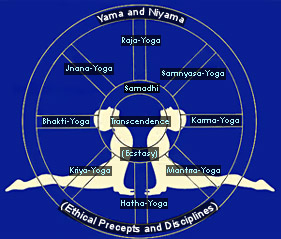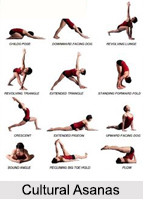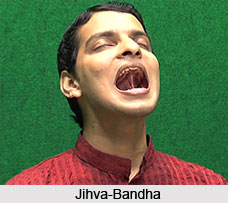 Properties of Yoga, often referred to as the `four pillars of Yoga`, evenly find relevance in the day to day life. The four properties of Yoga include Achara, Vichara, Ahara and Vihara. Achara is the discipline with self, the routine of a person and his behaviour. Vichara is the viewpoint of the individual and his behavior with outside world. Ahara is the diet food and Vihara is recreation.
Properties of Yoga, often referred to as the `four pillars of Yoga`, evenly find relevance in the day to day life. The four properties of Yoga include Achara, Vichara, Ahara and Vihara. Achara is the discipline with self, the routine of a person and his behaviour. Vichara is the viewpoint of the individual and his behavior with outside world. Ahara is the diet food and Vihara is recreation.
`Achara` is the first property of Yoga. It is claimed that only if people could organise their routines better, many of the survival difficulties can be avoided. It is due to the wrong routine that several problems are created. But the solution to all the difficulties lies only in setting out the right habit and the right routine. The external difficulties and the external world is just a projection of the own inappropriate way of living. If one can follow sincerely a proper routine, it is likely that a change can occur in the personality and nature. Discipline may look like external enforcement but it often leads to inner freedom.
`Vichara` is a person`s outlook. In the philosophical texts, it is said the mind in its own place makes a hell of a heaven or a heaven of a hell. A person who can think clearly does not get unreasonably frightened and disturbed. So one has to learn to grip oneself, handle own thoughts, so that they do not harm us. Yoga teaches one to learn to control the negative thoughts in the mind.
The strategy in Yoga is to enlarge the vision. Normally the approach of average human being is to indulge in unnecessary thoughts and not think constructive. When the mind and thoughts are undisciplined, uncontrolled, they have tendency to run at tangents all the time. The change in perspective can help in clearer thinking; thus one should learn to look at the widest angle. To increase a person`s understanding, one has to bring in God, invoke spirituality and widen the awareness and maximise the understanding.
`Ahara`, one of the properties of Yoga depicts the consumption habits. Food is a biological need for survival. Wherever one lives, he/she should eat the food that is grown natively. The customs and manners are created according to the food available there. One should always eat just for the objective of survival, one should not grudge in case of lack of varieties. A person should eat a small meal every four hours. In between the meals, if one feels hungry, he/she should eat little otherwise the immunity becomes low. One should never drink water with food, as the digestive juices in the mouth go into the stomach where the food looses the value. A person should never eat when agitated, disturbed, stressed or worried. If snacks are preferred, one may eat fruits, sprouts, khakhara, thepla, channa, dry bhel and almond. Potato and beat is to be avoided for diabetic patients because of high sweet content. In evening, one should take light food so that the stomach gets rest at night. Drinking water before meals helps to loose weight and if one wants to gain weight, he may drink water after food. Food should contain six taste for balancing of three doshas, according to Ayurveda, namely Madurai, Katur, Amla, Lavana (salt), Bitter and Astringen.
The food is classified into three types, namely Sattvic, Rajasic and Tamasic. Sattvic food is easily digestible. This natural energy giving food includes milk, milk products, fruits, dried fruits, vegetables of the season, cereals, sprouts, pulses, honey, jaggery, sugarcane, natural and unprocessed sugars and oils. Rajasic food is essential for physically active people and is heavy to digest. Non vegetarian food includes beans and pulses that are not sprouted, like hot spices, onions, and garlic. Tamasic foods are the nerve stimulating ones. They are usually unnatural in state. Bakery products of refined flour, pastries, chocolates, soft drinks, tea, coffee, wines and liquors, tobacco, canned foods, frozen foods and others fall under this category. All these types of food disturb the balance of nerves.
`Vihara` means recreation and relaxation that rejuvenates the body and the mind. This property of Yoga is very important that states that every individual should be involved into some activity where a person can express one`s emotion, or bring emotions into creativity. The activity should always involve body; mind and emotions; essentially including laughter, as laughter is the best medicine. Joy to an extent could be expressed in artistic activities like painting, drawing, dancing, singing, pottery, gardening, or playing with children.
In regular routine a person must take out half an hour for a joyful activity that soothes his mind. Thus, it is said that right from childhood, a child should be encouraged to perform some creative activity, like drawing, painting, singing or anything which would help the child in controlling the emotions in long-run. A person should learn the art of amusing himself with everything. Proper effects of Yoga can only be obtained if the person attains sound sleep. And to sleep well a person must learn the art of conscious relaxation and should discipline oneself. The properties of Yoga are simple steps that should be maintained in order to live a worthy life, free of unnecessary tensions and ambiguities.



